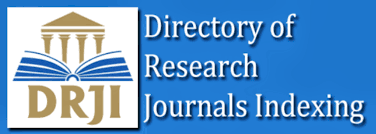ANÁLISE TEÓRICA-EMPÍRICA DA HIPÓTESE QUIT-LIFE NO SECTOR BANCÁRIO ANGOLANO
Palavras-chave:
Eficiência, Concentração, Angola, Sector bancário, Quiet-lifeResumo
O presente artigo tem como objectivo testar a hipótese Quit-life (QL) no sector bancário angolano. Para alcançar o objectivo desenhou-se uma metodologia assente nos modelos econométricos. O custo e escala eficientes foram determinados a partir do modelo Stochastic Frontier Analyse e para testar a hipótese em análise foram aplicados modelos com dados em painel, e o teste Hausman mostrou que os modelos de efeitos aleatórios descrevem melhor os dados angolanos. Fazem parte da amostra em estudo 22 bancos dos 29 bancos que operaram em Angola, no período de 2007 a 2019. Os resultados mostram que, o custo médio eficiente é de 0.77 nos 22 bancos estudados e operam na escala ineficiente de 0.74, os resultados confirmam a hipóteses Quiet-life no sector bancário angolano, o que constitui desafios tanto para os decisores políticos como para os gestores bancários.
Referências
Abanc. (2017). Obtido em 20 de 10 de 2018, de https://www.bancosdeangola.co.ao/bancos.
Aboagye-debrah, k. (2007). Competition, Growth and Performance in The Banking Industry in Ghana. These Doctor of Philosophy.
Adjei-Frimpong, K. (2013). Bank Efficiency and Bank Competition: Empirical Evidence from Ghana’s Banking Industry. Lincoln University: Thesis Doctor of Philosophy.
Aiello, F., & Bonanno, G. (2016). Bank efficiency and local market conditions. Evidence from Italy. Journal of Economics and Business (83), 70-90.
Aigner, D., Lovell, C. A., & Schmidt, P. (1977). Formulation and Estimation of Stochastic Frontier Production Function Models. Journal of Econometrics (6), 21-37.
Al-Gasaymeh, A. (2016). Bank efficiency determinant: Evidence from the gulf cooperation council countries. Research in International Business and Finance (38), 214-223.
Alhassan, A. L., & Ohene-Asare, K. (2016). Competition and bank efficiency in emerging markets: empirical evidence from Ghana. African Journal of Economic and Management Studies, 7(2), 268-288.
Alhassan, A. L., Tetteh, M. L., & Brobbey, F. O. (2016). Market power, efficiency and bank profitability: evidence from Ghana. Econ Change Restruct (49), 71–93.
Almounsor, A., & Mensi, S. (2016). The implications of market structure and bank efficiency on social welfare: the case of the Saudi Arabian banking system. Middle East Development Journal, 8(2), 329–357.
Altunbas, Y., Liu, M., Molyneux, P., & Seth, R. (2000). Efficiency and risk in Japanese banking. Journal of Banking & Finance(24), 1605–1628.
Asongu, S. A., Nting, R. T., & Nnanna, J. (2019). Market Power and Cost Efficiency in the African Banking Industry. European Xtramile Centre of African Studies, 1-24.
Badunenko, O., & Kumbhakar, S. C. (2017). Economies of scale, technical change and persistent and time-varying cost efficiency in Indian banking: Do ownership, regulation and heterogeneity matter? European Journal of Operational Research (260), 789-803.
Battese, G. E., & Coelli, T. J. (1995). Empirical Economics. A Model for Technical Inefficiency Effects in A Stochastic Frontier Production Function for Panel Data (20), 325-332.
Battese, G. E., Coelli, T. J., & Colby, T. C. (1989). Estimation of Frontier Production Functions and The Efficiencies of Indian Farms Using Panel Data from Icrisat’s Village Level Studies. 1-32.
Berger, A. N., & Hannan, T. H. (1998). The Efficiency Cost of Market Power in the Banking Industry: A Test of the "Quiet Life" and Related Hypotheses. The Review of Economics and Statistics, 80(3), 454-465.
Berger, A. N., & Mester, L. J. (1997). Inside the black box: What explains differences e efficiencies of financial institutions? Journal of Banking & Finance (21), 895-947.
Bikker, J. A., & Haaf, K. (2000). Measures of competition and concentration in the banking industry: a review of the literature. Economic & Financial Modelling (9), 53-98.
BNA. (2009). Obtido em 20 de 1 de 2018, de WWW.bna.ao/up loads/
BNA. (2015). Obtido em 31 de 10 de 2017, de www.bna.ao/uploads
Boccard, N. (2010). Industrial Organization: A contract Basead Aproach.
Bod´a, M. (2014). Concentration Measurement issues and Application the Slovak Banking Sector. Procedia Economics and Finance (12), 66-75.
Chan, S., Koh, E. H., Zainir, F., & Yong, C. (2015). Market structure, institutional framework and bank efficiency in ASEAN 5. Journal of Economics and Business (82), 84-112.
Coelli, T. J., Prasada Rao, D. S., O'Donnell, C. J., & Battese, G. E. (1998). An Introduction To Efficiency And Productivity Analysis (2ª Edition Ed.).
Debreu, G. (1951). The Coefficient of Resource Utilisation. Econometrica(19), 273-292.
Degryse, H., & Ongena, S. (2001). Bank Relationships and Firm Profitability. Financial Management, 30(1), 9-34.
Farrell, M. J. (1957). The Measurement of Productive Efficiency. Journal of the Royal Statistical Society, 120(3), 253-290.
Frondel, M., & Vance, C. (2010). Fixed, random, or something in between? A variant of Hausman's specification test for panel data estimators. Economics Letters (107), 327–329.
Fu, X., & Heffernan, S. (2009). The effects of reform on China’s bank structure and performance. Journal of Banking & Finance (33), 39–52.
Fu, X., & Heffernan, S. (2007). Cost X-efficiency in China's banking sector. China Economic Review (18), 35–53.
Gharsellaoui, M. (2015). The Extent of Competition and Its Impact on Bank Efficiency: Case of the Tunisian Commercial Banks. International Journal of Empirical Finance, 4(5), 278-290.
Goldberg, L. G., & Rai, A. (1996). The structure-performance relationship for European banking. Journal of Banking & Finance (20), 745-771.
Gunes, H., & Yildirim, D. (2016). Estimating cost efficiency of Turkish commercial banks under unobserved heterogeneity with stochastic frontier models. Central Bank Review (16), 127-136.
Heffernan, S., & Fu, X. (2009). The structure of retail markets: what do we learn from bank-specific rates? Applied Financial Economics, 23(19), 1885-1898.
Hicks, J. R. (1935). Annual Survey of Economic Theory: The Theory of Monopoly. The Econometric Society, 3(1), 1-20.
Hirschaman, A. O. (1964). The Paternity of index. The American Economic Review, 54(5), 761.
Khan, M., & Hanif, M. (2017). An Empirical Evaluation of ‘Structure-Conduct-Performance’ and ‘Efficient-Structure ‘Paradigms in the Banking Sector of Pakistan. SBP Working Paper Series (90), 1-14.
Koopmans, T. C. (1951). Efficient Allocation of Resources. The Econometric Society, 19( 4), 455-465.
Leibenstein, H. (1966). Allocative Efficiency vs. "X-Efficiency". The American Economic Review, 56(3), 392-415.
Martins, A. I. (2012). Avaliação Da Eficiência E Identificação Dos Fatores Determinantes Da Eficiência Do Setor Bancário Em Portugal. Universidade de Algarve: Tese de Doutoramento.
Maudos, j., & de Guevara, J. F. (2007). The cost of market power in banking: Social welfare loss vs. cost inefficiency. Journal of Banking & Finance (31), 2103–2125.
Maudos, J., Pastor, J. M., Perez, F., & Quesada, J. (2002). Cost and profit efficiency in European banks. Journal of International Financial Markets, Institutions and Money (12), 33–58.
Meeusen, W., & van Den Broeck, J. (1977). Efficiency Estimation from Cobb-Douglas Production Functions with Composed Error. International Economic Review, 2(18), 435-444.
Naldi, M., & Flamini, M. (2014). The CR4 index and the interval estimation of the Herfindahl-Hirschman Index: an empirical comparison. Obtido em 30 de 3 de 2018, de Https: //hal.archives-ouvertes.fr/hal-01008144
Park, K. H., & Weber, W. L. (2006). Profitability of Korean banks: Test of market structure versus efficient structure. Journal of Economics and Business (58), 222–239.
Solís, L., & Maudos, J. (2008). The social costs of bank market power: Evidence from Mexico. Journal of Comparative Economics (36), 467–488.
WEISS, W. (1989). Concentration and price. Cambridge, Mass, and London: MIT Press: LEONARD.
Zhang, J., Jiang, C., Qu, B., & Wang, P. (2013). Market concentration, risk-taking, and bank performance: Evidence from emerging economies. International Review of Financial Analysis (30), 149-157.
Downloads
Publicado
Como Citar
Edição
Secção
Licença
Direitos de Autor (c) 2023 Manuel Dias, Eurico Cangombe

Este trabalho encontra-se publicado com a Licença Internacional Creative Commons Atribuição-NãoComercial-CompartilhaIgual 4.0.

























